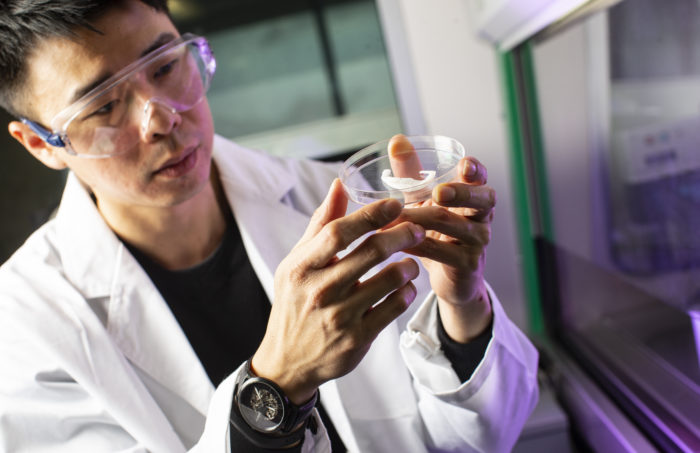News
3D printing bone tissue
Jun 28 2022
There is a revolution taking place in science and technology. The idea of 3D printed body parts, once reserved for the pages of science fiction novels, is now becoming a very real possibility. Potentially, we are only a few years away from major hospitals being fitted out with 3D printing capabilities that can transform medical procedures.

Our researchers are excited to be a part of this movement, and we are making it possible for anyone to learn about 3D bioprinting through the next intake of our free Massive Open Online Course (MOOC) – Bioprinting: 3D Printing Body Parts, offered by the ARC Centre of Excellence for Electromaterials Science (ACES) and the University of Wollongong through FutureLearn.
I am delighted to have the chance to lead this course again along with my colleague and biofabrication specialist Dr Stephen Beirne. As course presenter, I will take you through the opportunities and challenges arising from the rapid advancement of this science and technology, with significant contributions from leading clinicians from across Australia.
More than 27,000 learners from 145 countries have enrolled in our Bioprinting: 3D Printing Body Parts MOOC since we launched the course in 2015. The 10th run of the 3D bioprinting MOOC will start on Monday 28 January.
What is a MOOC?
MOOC stands for Massive Open Online Course and is just that – a short course, online learning format where you have the chance to learn about some of the most advanced technologies in simple, easy-to-understand way.
Our free MOOC on 3D bioprinting runs for four weeks and requires only three hours of flexible weekly study. During this time you will be introduced to the multidisciplinary nature of clinical 3D bioprinting and commonly used biomaterials and bioprinting techniques while linking with other like-minded people from across the globe.
Why complete a MOOC on 3D Bioprinting?
3D bioprinting is a rapidly emerging multidisciplinary area with direct clinical applications that holds exciting career opportunities for professionals in a range of fields including science, health, engineering and technology.
If you have an undergraduate degree in Science, Engineering or Medical Technology, our MOOC can help you better understand and evaluate the opportunities available if you pursue post-graduate qualifications in this area.
Likewise, if you are a clinician or medical student, you can see how your colleagues are using 3D bioprinting to tackle significant medical challenges.
Our Approach
The Bioprinting: 3D Printing Body Parts MOOC explores the multidisciplinary nature of clinical 3D Bioprinting, the bioink and printer hardware requirements for 3D bioprinting, and some of the innovative collaborations between our researchers and clinicians from across Australia.
Through a number of case studies, you will be introduced to the approaches used by our researchers to tackle some big clinical challenges including cartilage regeneration; 3D printed ears to treat microtia (a congential condition of abnormal development of the outer and/or middle ear); and 3D printed structures containing islet cells for transplantation into patients to treat diabetes.
We also explore the possibility of printing a ‘brain on the bench’ (3D-printed model of a brain complete with 3D-printed neurons derived from stem cells) to better understand the development of debilitating neural diseases.
The MOOC also provides learners with a greater understanding of the importance of an interdisciplinary collaborative approach to ensure success, and the need for consideration of ethical and regulatory issues if real clinical applications of 3D bioprinting are to be realised.
Details













